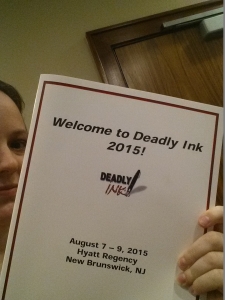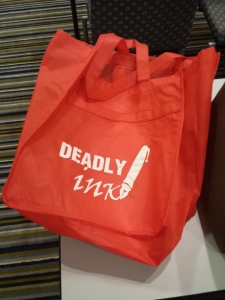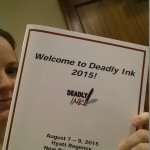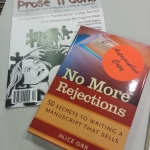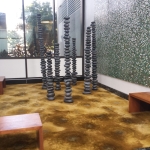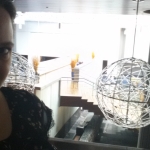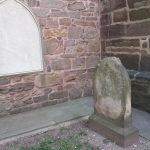VODKA O’CLOCK 1534
PANIC ATTACKS AND THE DEADLY INK WRITERS’ CONFERENCE
AMBER LOVE 10-AUG-2015 This is a video episode of Vodka O’Clock and it’s a solo show. You can sponsor Vodka O’Clock and AU at Patreon.com/AmberUnmasked. Because this is a video episode, it will not be available on Stitcher, but it is on YouTube and iTunes.
Today’s episode was recorded when I returned home from the Deadly Ink writers’ conference. I was only able to attend one day, so I chose the least expensive one, Friday, which was made of 2 two-hour classes with professional writers/educators. The vlog today is half about my personal struggle with mental illness and how I survived the day; and, half is about the actual classes and given more written detail below than recorded detail.
I’ll definitely keep my eyes open for more Sisters in Crime and Mystery Writers of America workshops. I hope that in future events, I have better opportunities to network. I barely got to talk to anyone this time. I have to say, I’m still waiting for MWA to realize self-publishing and small press are not total cesspools (and comics are not even considered); to join, you have to be published by one of the publishers on their approved list. Because of that, I could only join Sisters in Crime.
PANIC ATTACKS
It’s not like I’ve never been to a writers’ conference before or that I’d never driven to New Brunswick. I’ve done both, but not on any kind of regular basis. I have been toying with the idea of doing a photo series of what depression looks like, but the hesitation comes from knowing there are people who think photos of oneself are narcissistic. My supportive friends who also deal with mental health issues have told me to do it anyway and fuck the critics who don’t understand self expression =/= narcissism.
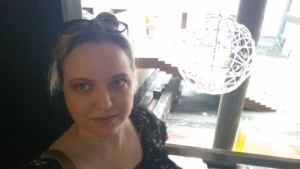
I haven’t liked any of the photos I’ve tested so far. However, when it came to Friday’s series of panic attacks, I knew I would feel better sharing the story since I was going to be sharing the details of my time at Deadly Ink anyway. There’s no reason for me to sterilize the discussion of a convention just because I have personal struggles. Can you imagine if a person in a wheelchair tried to cover an event but never analyzed the accessibility of the show? Well, I don’t have a wheelchair but I have conditions that can make leaving my house or entering a strange room quite difficult. Is it the same? By no means. It’s a different type of struggle all together and I can hide my problems whereas someone in a wheelchair can’t.
Regardless how much easier it is for me because I “only†have mental issues, I believe that sharing the experiences has value. Maybe you’re not the person that can see the value. That’s okay. Not everyone will be.
That brings me to the vlog. The first half is about the emotional roller coaster from terror to comedy from getting up in the morning to driving to Deadly Ink.Â
DEADLY INK
The second half of the video, I discussed some criticisms of the organization of the event. It’s nothing major, but worth mentioning. The Hyatt Regency was lovely and there was a discount for parking in their garage ($8 for the day). Watch the video and please learn from it if you are a convention organizer. The classes were full at 30 students and about 90% women.
I appreciated the long 90 minute lunch break. I walked a few blocks to Burgerfication and had one of the best quinoa burgers of my life and freshly cut fries that still had the bits of skin on the ends. Then I took a short stroll through a quaint old cemetery, the kind where the grave markers are so old you can’t read them anymore. I love cemeteries like that.
RED HERRINGS WITH JANE CLELAND
Jane Cleland http://www.janecleland.com/ writes the Josie Prescott cozy mysteries with antiques theme (most cozies are known for the charming themes). She’s a past chapter president of the New York Mystery Writers of America. She also teaches at the college level and guest lectures.
Cleland was a lot of fun as a teacher. She works hard to get your brain hamsters running by introducing a small amount of information that the students need to turn into something with potential. I suspect there was even a little NLP*Neurolinguistic Programming at play, though maybe by accident. When Cleland said we would be writing about a man walking down a sidewalk who finds a wallet. She said it was up to us to determine his age, looks, state of being, whether in a town or city, if he’s gay… And from that nugget implanted in the mesmerized students, half the selections of samples that were read aloud included gay characters.
The session adequately covered the three types of red herrings found in mysteries. Human nature tricks where characters have personalities that are switch between good person and bad person which Cleland calls the Halo/Devil aspects. (Character helps out a neighbor in chapter one but five chapters later you discover he beats his wife.) Red herrings of details were about writers slipping one little thing into a list or description that they hope readers don’t realize is a clue. And the last one was the trick of using a character’s expertise; this one is used a lot in some of my favorite TV shows like White Collar’s Neal Caffrey who can look at a piece of art and in five seconds declare it a forgery.
We also covered the use of unreliable narrators and the new trend to classify suspenseful thrillers by female authors as “women’s suspense†instead of just “suspense/thrillers†like men. Personally, I find this practice just as exclusionary as comic book readers who are strictly DC or Marvel and won’t give anything else a chance. If you know there’s a “women’s shelf†of the book store and you read James Patterson or Michael Connelly, the likelihood of you continuing on to a section (IRL or online) where you never picked up a book before is slim. The only good thing I can see from it is that readers specifically looking for female authors will have an easier time finding them.
One thing that Cleland said she does caught my curiosity. She said she writes for her readers and their expectations. This is the opposite of most advice from veteran writers who normally tell people to write the books they want to read and don’t pay attention to trends/markets. If you want to write about vampires in the French and Indian War instead of pretty teen vampires in modern Los Angeles, then do what you want. Cleland makes her defense saying that if someone picks up a book by her from her cozy choices, they would be shocked if they ever found vulgar language, for example, so she maintains the strict rules of the cozy and doesn’t write that way. Not me. I like middle-aged protagonists in charming towns who curse just like I do. And if they get to have sex lives, that’s awesome. Yet my writing style is far from hard case crimes. Do I have the right to challenge these rules? I’m sure most would say I don’t until I have ten books available. C’est la vie!
THE EXTREME NOVELIST WITH KATHRYN JOHNSON
Kathryn Johnson regularly teaches an eight-week course called the Extreme Novelist to limited classes of 15 students. Their mission and plan is to write a rough draft of an average size novel (80,000 words).
Johnson’s sparkling personality was perfect for an instructor. She clearly loves her work. She keeps an open-door policy with her students so that they feel there is a support system out there rather than fearing all other authors as competitors.
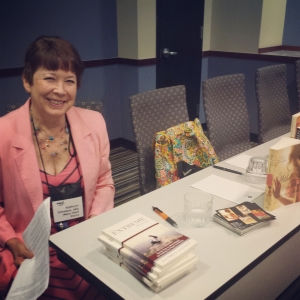
Her methodology was quite close to how I plot comic scripts. She approaches the central conflict first to define what the point of the story is. Then she comes up with a little bit about characters but not every detail because more will come up as she writes. She approaches writing sequentially, scene by scene. For her, she makes students sign a contract that they will write 90 minutes a day, six days a week.
Luckily, through Q&A and personal anecdotes of real students who she has taught, other options were presented. Instead of a time constraint, you could use page or word counts. I use word counts like in #NaNoWriMo. It’s easier for me to approach prose this way. Not true for comics. They are different beasts when it comes to the technical part of the writing. Those I do by scene, then page breakdowns, which is precisely how I do outline for prose. Since so much of the comic product is the art, my word count means nothing.
Johnson’s method is critical for anyone trying to write and not in the habit. Johnson referenced the debated Malcolm Gladwell theory that it takes 10,000 hours of deliberate practice to become an expert. The eight weeks will help you develop new time management and turn writing into a habit. I can attest to this from last year’s #NaNoWriMo. It took a while, but eventually, I wanted to get back to my story each day and see the progress bar in Scrivener go from red to orange to yellow to green. I love that progress bar.

She also employs the practice of not looking back – only charging forward through your pages. She doesn’t think rough drafts are garbage either. The steps of revising would then be tackled after the eight-week boot camp.
Johnson also left plenty of time for questions. She also set aside 15 minutes to talk about different publishing options: traditional big houses, small press, and self-publishing (which is sometimes called creator-publishing or author-publishing). Johnson has had experience in each one of these types of publishing. It was the first time that I heard a veteran publisher in person take the stigma out of self-publishing. Is there crap out there because it’s easy to self-publish now? Sure. But there’s plenty of crap published by big houses, like Fifty Shades so let’s not forget that gem. If you’re going to be critical, be fair in your criticism.
Her students from her Extreme Novelist course convinced her to take her instructions and turn them into a book for people who can’t attend the classes. That’s what brought Johnson to Amazon’s CreateSpace for self-publishing. It’s also what I did last week to bring my ebook THIRTEEN LESSONS LEARNED FROM CAM GIRLS into print. Johnson probably did the better process for her book. She started with CreateSpace (printed) and then used the option there to migrate the book to Kindle Direct Publishing to make it available digitally. I did the reverse and because of that, I couldn’t use the cover image from the Kindle templates in CreateSpace which I think is bizarre, but that’s how it went. So my printed books will have different covers.
RELATED
My 2014 MWA Academy experience

